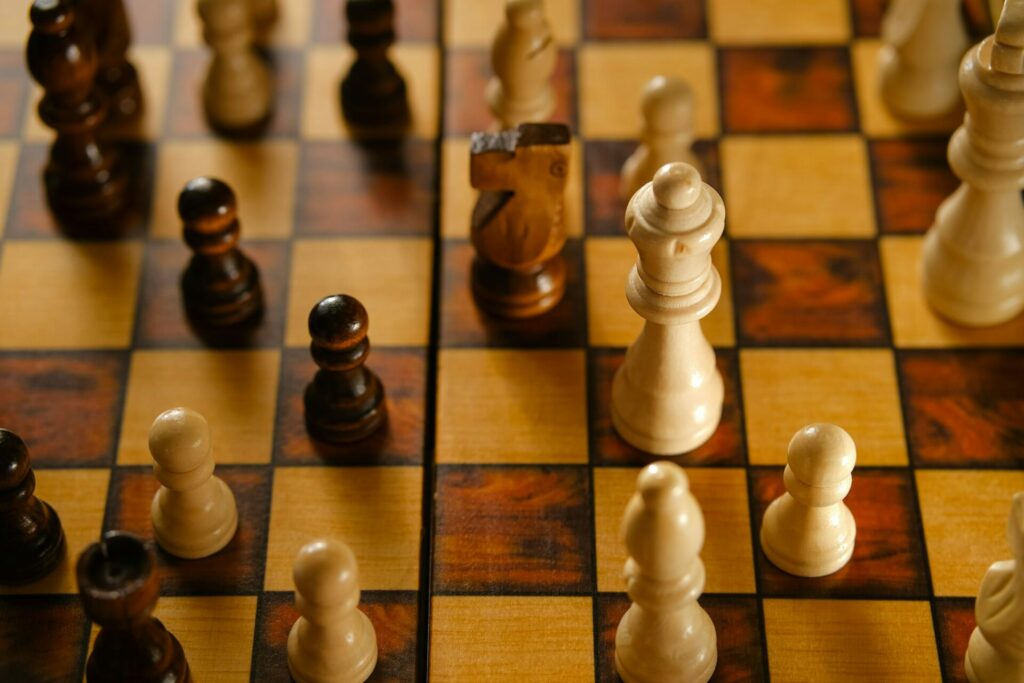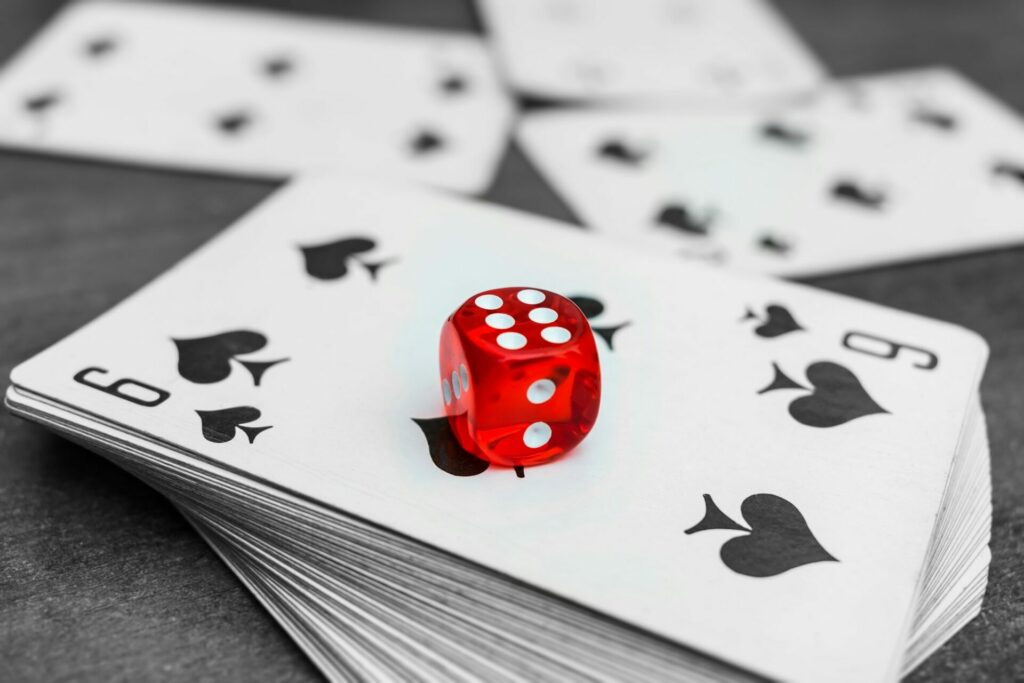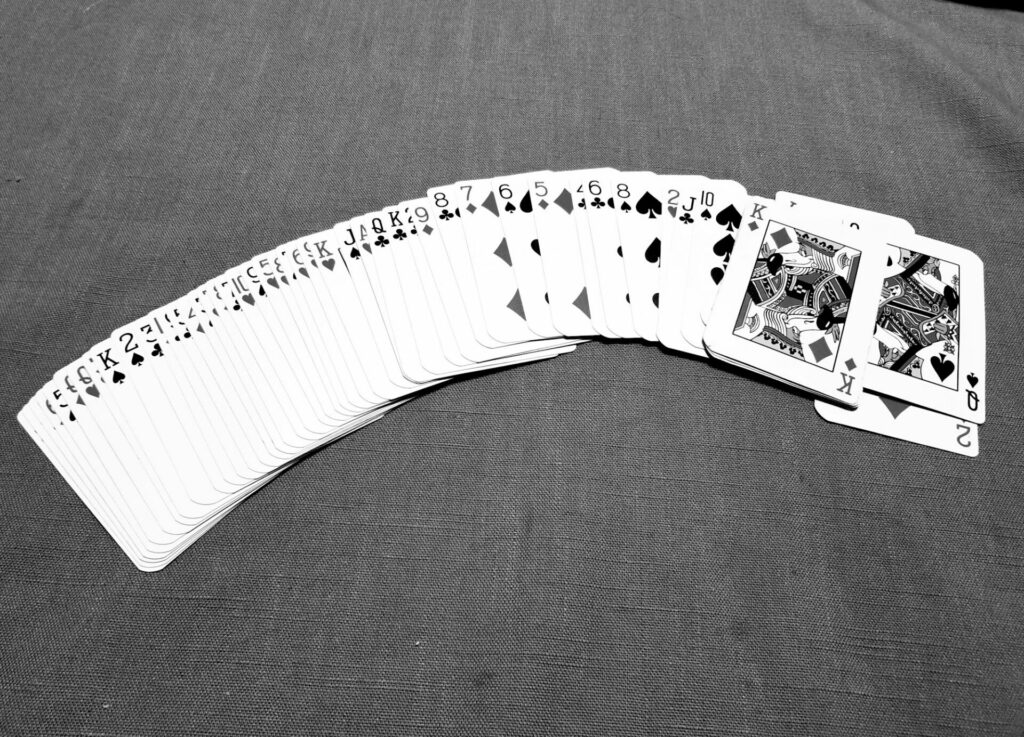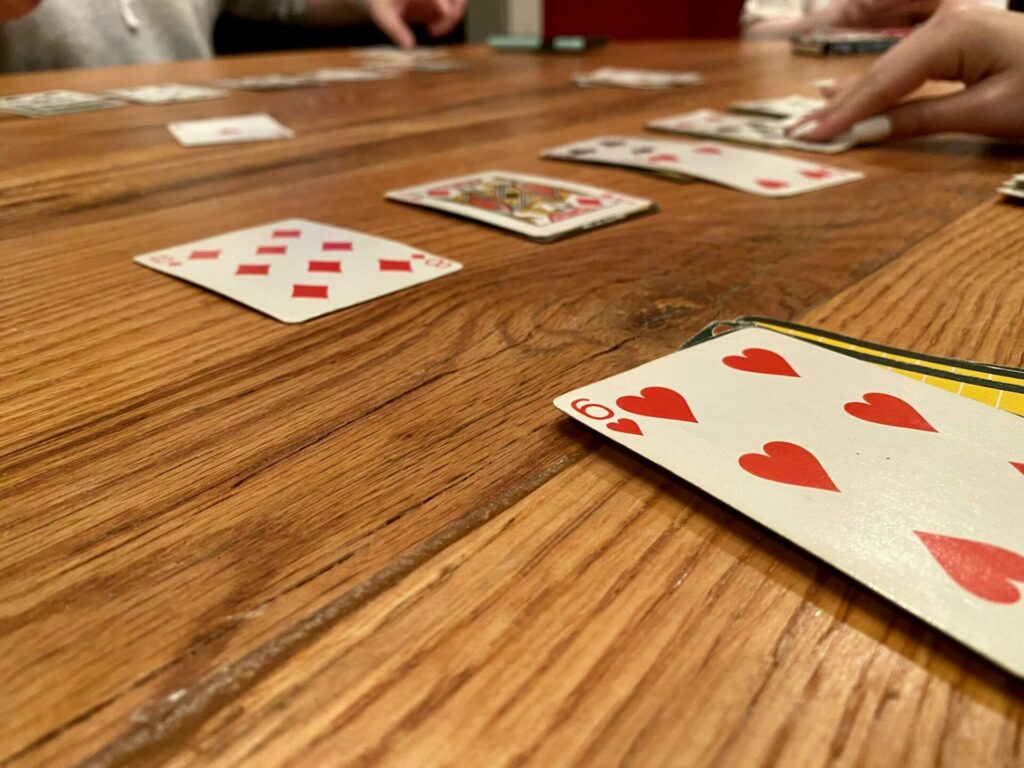
Are you among those who would love to spend their free time playing a mind-strengthening game? If you are looking forward to playing indoor games like chess and solitaire! Then here we have brought trucks and tactics you need to adapt to not just playing, but playing like a pro in these games.
From the method of setting the chess board to learning the ways of arranging the deck of cards in the right proportion in a solitaire, then you have come to the right place.
How to set up a chess board
Setting up a chessboard is a straightforward method, and learning the rules of play is not difficult. Learn the tips and tricks of one of the oldest and most popular board games of all time.
It is a tricky business to apprehend the number of squares in business. To ease this out for you, there are about 204 squares in a chessboard.
- Firstly, setup the chessboard so that the bottom-right square in the board is a light square. On the edge of the board both players need to have a light square in the right corner. The setup for each player looks identical from their perspective. You set up your pieces on the two horizontal rows. These rows are also referred to as ranks. All the major pieces go on the first rank. Then, pawns go on the second rank. Chess uses every single square on the board.

A tip to keep in mind when you are setting up your chessboard is that White is always on rank 1 and 2; and Black is always on ranks 7 and 8.
- Place your rooks or castles in each corner. A rook is denoted by ♜. Rooks are tall pieces that move in straight lines horizontally i.e. along “ranks” and vertically i.e. along “files”. On some novelty board, such as Civil War sets or movie-themed pieces, it may be impossible to tell what a piece is without knowing the icons which may be marked on the bottom of the pieces.
- Knights, which are denoted by ♞, are placed next to the rooks. The knights, which look like horses, go just to the right and left of the rooks. Knights move three squares in an “L” shape, first two spaces in one direction, then one space in another. Knights are the only piece that can hop over pieces to make their moves.
- Place the tall, round-topped bishops(♝) next to the knights. Bishops move only along diagonal lines. The left bishop will start on a dark square (and always remain on dark). The right bishop starts on a light square (and always remains on light).
- Place the queen (♛) on the remaining, matching-color square. If you are the white side, your queen goes on the remaining white square in the middle of the first rank. If you are playing black, your queen goes on the remaining black square. The queen is one of the tallest pieces in the game and has a spiked crown. She can move horizontally, vertically, or diagonally any number of spaces, making her the most powerful piece on the board.
- Place the king(♚) on the last open square of the first rank. The king wears a rounded crown, topped with a cross and is usually the tallest piece on the board. The king can move in any direction but only one space at a time. Aim of the game is to use the rest of your pieces to protect your king. When you lose your king, you lose the game.
- You need to place the pawns(♟) along the second rank. After you’ve put your major pieces on the first rank, line up the lowly pawns like a protective wall on the second rank. On the first move, pawns cam either move two space or just one, usually Pawns can move forward one space at a time. Once both players place their pieces like shown above, they’re ready to play.
Understanding Chess Rules
- Win the game by “checkmating” your king
In the game, you never actually capture a king. It happens when the king cannot escape check, no matter what. But if your opponent’s king is merely “in check” which means the opponent has a means of escaping, then the player must immediately move their king out of check if it’s possible to do so. Once it’s apparent that a king cannot avoid being captured on the next move, checkmate is immediately declared, and the game is over. Some players like to say “check” when they make a move that puts the opponent’s king in immediate danger. You may not place your king in check then, it is an illegal move.
- Begin with White

Whomsoever has the white always makes the first move, and the players alternate after that. If players of equal ability are playing, then there is a slight advantage to the person who is going first. In each turn, one player will move one piece. A player cannot skip a turn simply because they don’t know where to move. If a player has no legal moves, but it is not in check, the game is a stalemate.
The sole exception to the rule of moving only one piece is “castling,” which allows a player to move two pieces at once in a specific pattern to protect the king.
- Capturing the opponent’s pieces (removes that piece from the game)
If one of your pieces ends on a square already occupied by an opponent’s piece, you “capture” that piece and remove it from the game. Then your piece will take the place of the captured piece’s position on that square. You cannot capture your pieces or occupy any square with more than one piece. Knight is the only exception to this rule, you can move Knight through a piece. Except for the pawn, you can capture pieces only with regular moves. For instance, rooks capture pieces with horizontal or vertical movement.
You cannot move over a piece to capture another one. If your piece “hits” another piece during its movement, then capture the piece, and stay on that square.
- Condition of stalemate
A game can end in a “draw”. Stalemate occurs when neither the king is in check nor the next player to move has any legal move left. If you are in an advantageous position, you would want to avoid a stalemate. Stalemate typically may occur when there are only a few pieces left, such as kings that can’t move without putting themselves in check.
In this case, you can never put yourself in check. Thus, if it’s your turn to move and your only available move would put your king in check, then the game is over, and a stalemate is declared. In some tournaments, this can mean you lost, although most players call this a draw. Always remember, Stalemate does not occur if either king is currently in check.
Moving the Pieces
- Move pawns one space forward
The only move pawns can make is to move forward, so they’re not very useful. However, in certain circumstances, they become quite effective if your pawn gets to the first rank (for White) or eighth rank (for Black), you can ‘”promote”‘ the pawn to any piece other than the king or pawn. That means a pawn that has advanced very far along becomes a powerful piece. Players typically promote to a queen but may promote to another piece to avoid stalemate or use the knight’s move Also, promoting to a piece other than the queen is called “underpromotion“, but players usually prefer to promote to the Queen.
In its very first move, a pawn may move two spaces forward instead of one. A pawn can acquire a piece that is diagonally one square in front of it. It cannot capture an adjacent piece.
En passant, which means “capture in passing”, can occur when the opponent moves their pawn two spaces ahead to avoid moving into your pawn’s position. If this happens, only on your very next turn you can move your pawn diagonally into the space they skipped and take that pawn anyway.
- Rooks can move an unlimited number of spaces vertically or horizontally
Rooks move in straight lines forward, backwards, or sideways. They can cross as many vacant squares in a straight line, as they want but must stop if they come to another piece. If an enemy piece is in the way, the rook must stop before the piece or capture it. If it’s your piece, it must stop before it comes to that square.
- Knights move in an “L”-shape

Knights have the most unique pattern of movement in the game—they jump three times, first two spaces in one direction and then one space in a perpendicular direction.
Knights are the only pieces that are allowed to hop over other pieces of either colour. They capture a piece only by finishing their move on a square occupied by an enemy piece.
- Move bishops any number of spaces diagonally
Bishops can move in four directions either diagonally right or left. Particularly, a bishop always stays on the same colour squares. For example, if it begins on a light square, then it will move in the same colour square only, it won’t jump to another colour.
Bishops cannot hop over pieces. If there is a piece in the way, the bishop must either stop or capture it.
- Move the queen in a straight line in any direction and any number of spaces
The queen can move forward, backwards, sideways, and diagonally in any vacant space she wants. The queen is the most powerful piece in chess. But a queen can neither move in the knight’s L-shaped pattern nor move over pieces. She must complete her move either by stopping before coming to another piece or by capturing that piece.
- Move the king in any direction, but only one space at a time
Kings can move one space forward, backwards, sideways, or diagonally. The only exception to King’s movement is castling, whereby a king and one of the rooks switch positions to help defend the king. For castling the king: Neither the king nor the rook can have moved at any point in the game thus far. There can be no pieces in between the rook and the king. You need to make sure the king is not in check at the time of castling, nor can the king in castling move through or to a square in which he would be in check.
For castling, move the king two spaces towards the rook in one turn, then slide the rook into the square the king skipped over. They will now be on opposite sides and right next to each other.
How to set up Solitaire

Solitaire is a card game that you can play by yourself. For solitaire, you need a standard 52-card deck, and a flat surface to set up the game. The aim is to move all the cards from the Tableau where the second is the Stock to the Foundation, the four empty spaces on the top right, in ascending order from Ace to King, according to their suits.
Tableau refers to the seven stacks of cards on the bottom while stock refers to the remaining cards on the top left.
If you know the board layout and rules, then it takes less than a minute to set up the game.
Solitaire has four sets of piles, which you use to play the game—foundation piles, the tableau, stockpile, and waste pile. Before you begin playing you need to set up and understand the strategies of the game properly.
How the various piles are used
- Firstly, you have to place all the cards into four foundation piles and the piles are arranged in ascending order from ace to king. Since you won’t have foundation piles when you begin the game, you leave space in the upper right corner of your game space for these four piles.
- Deal with the tableau. Tableau is the main area of gameplay, the tableau consists of 28 cards laid out in seven columns. After you shuffle, deal one card from left to right to begin seven columns. You have to set the cards from left to right thus, the first column has one card, and the subsequent columns have an additional card until the last column has seven. In each column, the last card should be face-up while the rest of the cards remain face-down until revealed.
- Next step is to gather the stockpile. Take the remaining cards and place them face-down—these cards now become the stockpile. When you run out of moves on the tableau, you can always turn over cards from the stockpile and thus it can be made available to play. Once you turn them face-up, they become part of the waste pile, and you can play the top card on foundation piles or in the tableau. Typically, you place this pile above the first card of the tableau.
- Make sure you are saving space for the waste pile. When you flip any cards over from the stockpile, they are placed face-up into the waste pile. You have to use top face-up cards to build foundation piles or to arrange cards in the tableau. If you do use the top card, you’re able to play the next face-up card that appears in the waste pile.
How to Play Solitaire
- Learn the object
Have never played solitaire before? Then, you will need to take a few minutes to learn how to play solitaire first. The object of a game of Solitaire is to transfer all of the cards in the deck and the tableau stacks to your foundation piles. You begin the game by arranging cards in these stacks going from lowest to highest and separated by suit.

Let’s say one stack begins with the ace of spades, so only the 2 of spades can be placed in this next stack. You cannot place the 3 of spades until the 2 of spades are in their place.
- Drawing and placing of cards
To begin playing you need to draw and place cards. Draw one card at a time and either play it or discard it if you cannot use it. If the colour and sequence are right, then you can play a card on one of your tableau stacks. The colours need to vary between red and black.
For instance, if one stack has a five of clubs on it and you draw a four of spades, then you could play a four of spades on a five of clubs.
- Move and flip face-up cards
You can expose face-down cards by moving cards between stacks. When a face-down card is exposed, then you can flip it over and use it.
If one stack has a three of hearts on it and another stack has a four of spades on it, then you could move the three of hearts to the four spades stack. This will expose a face-down card that you can then flip over and either leave it in place or use it.
- Reuse the discard pile
You can always reuse discarded piles, by flipping over the stack and begin using those cards again. Use it by drawing one card at a time and by flipping the deck each time you go through it.
- Transfer cards to the foundation piles to clear them
You can draw or expose cards and then transfer them to the foundation piles above your tableau stacks. Remember that each pile needs to begin with an ace card and there should only be one stack per suit.
When each stack contains an ace through the king set, then the game is finally completed and you have won the game!!
Strategies to Win Solitaire
- Remember the Cards in the Stockpile
Stockpile cards are always facedown, but you reveal them as you cycle them into the waste pile. Always remember cards in the stockpile so you can easily flip through the pile to get a card you need to make a crucial move.
- You need to pay attention to Larger Tableau Columns
Larger tableau columns usually have more facedown cards, and revealing those cards may give you just what you need to make a move. You have to prioritize moving cards from larger tableau columns only then you will get more face-up cards available to play.
- Prioritize Facedown Cards

A large number of face-up cards means larger options you have to play. So focus on revealing facedown cards by moving cards off of them so you can turn them face-up.
- Remove All the Cards from Columns
If there are empty columns then it makes room to add kings. Placing kings in empty spaces gives you a safe place to build a sequence and remove cards from other columns. Always focus on emptying entire columns of cards.
- Work the Tableau Before Foundation Piles
You can reveal facedown cards in the tableau to help make moves. Although an ace or two isn’t necessary for the tableau, other ranks of cards may help you build on a sequence. So if you have a card that can be played both in the tableau as well as a foundation pile, then you need to make sure you are keeping it in the pile until the moment comes when you don’t require it anymore.
Chess and solitaire are some of the games that enhance your cognitive functions. If you are a neophyte to this game, then you have nothing to worry about this was the wholesome information with every step to set up these board games, i.e., chess board game as well as solitaire. Various chess-playing games are available in the app store and Play Store, these electronic chessboard games are available in various formats digitally, such as 3-D chess, classic chess and vintage chess. Similarly, there are various digital platforms to play chess.



